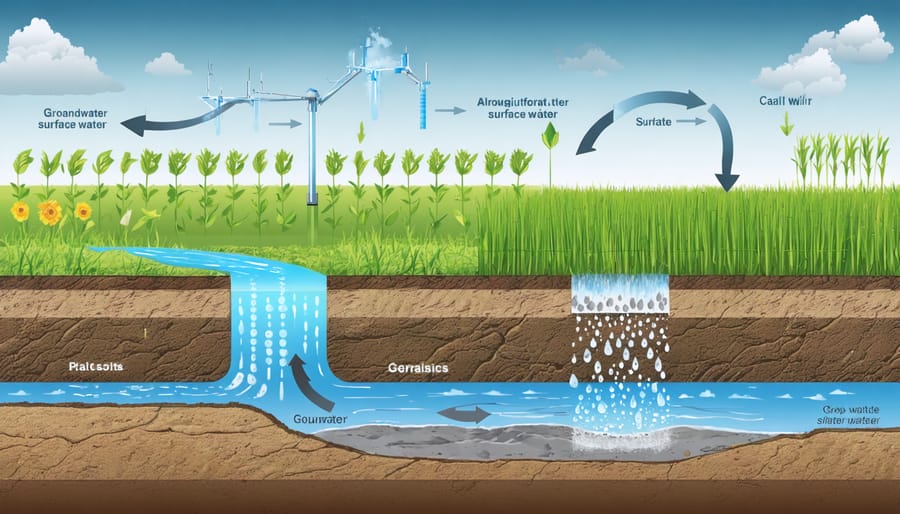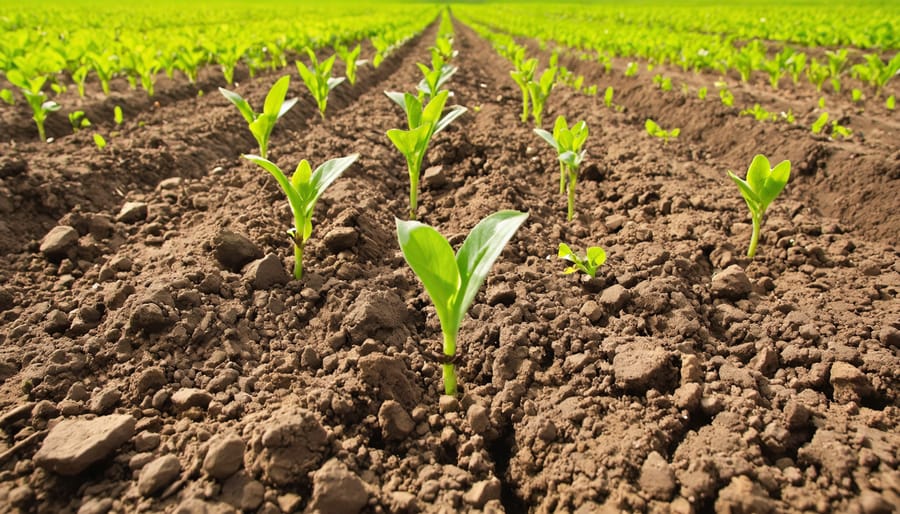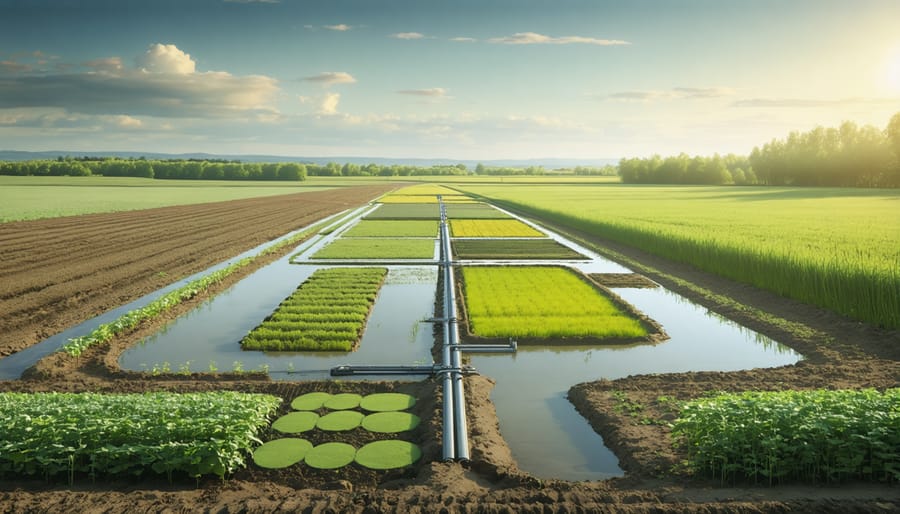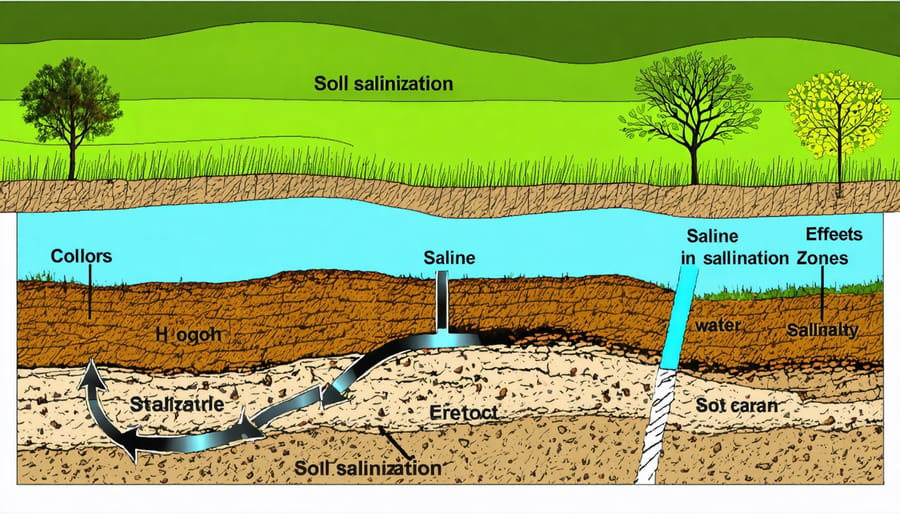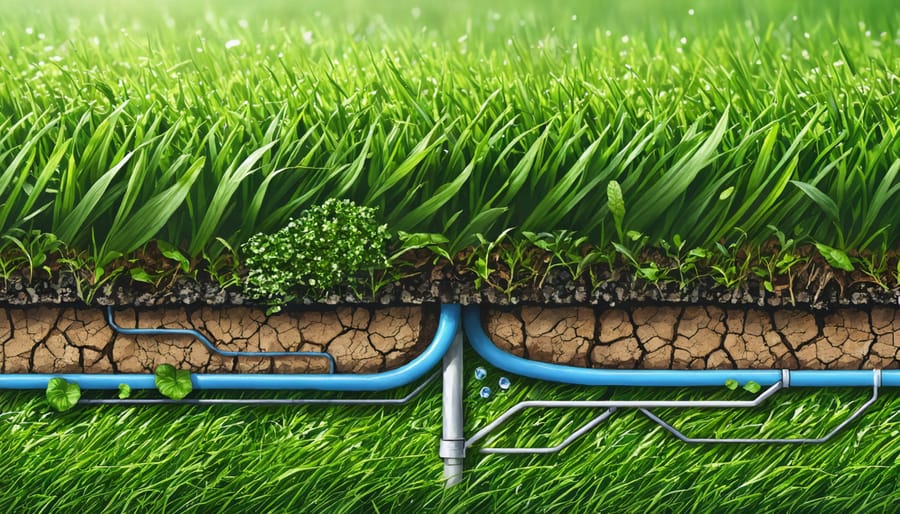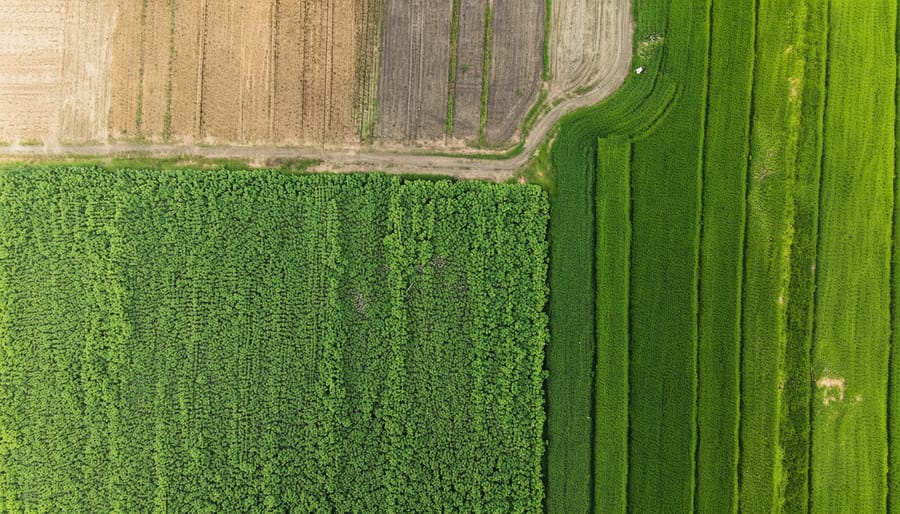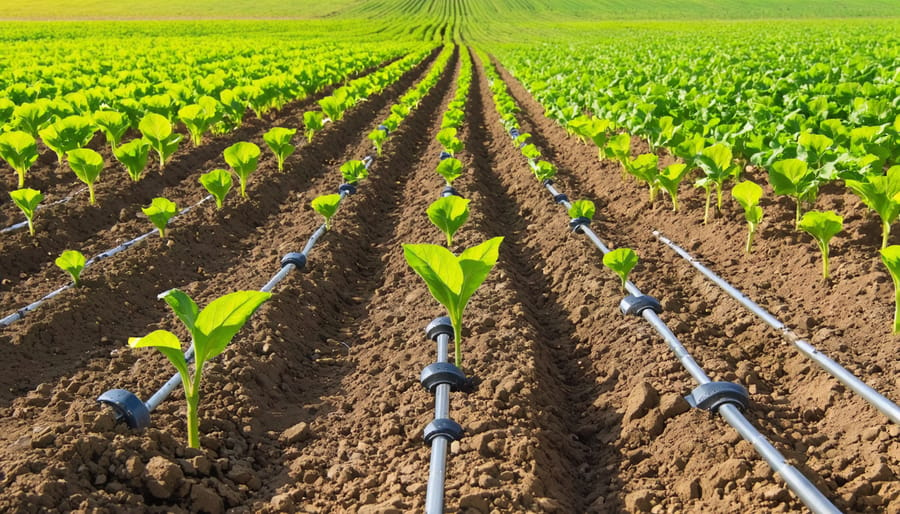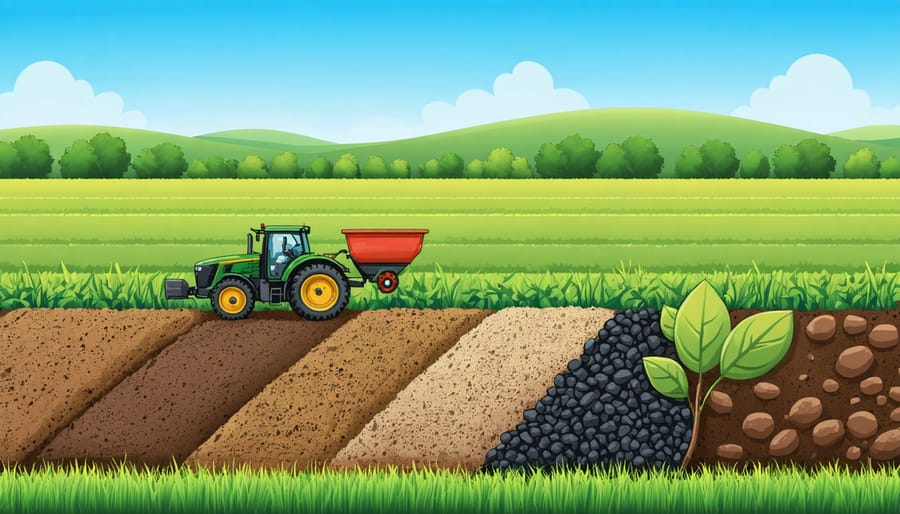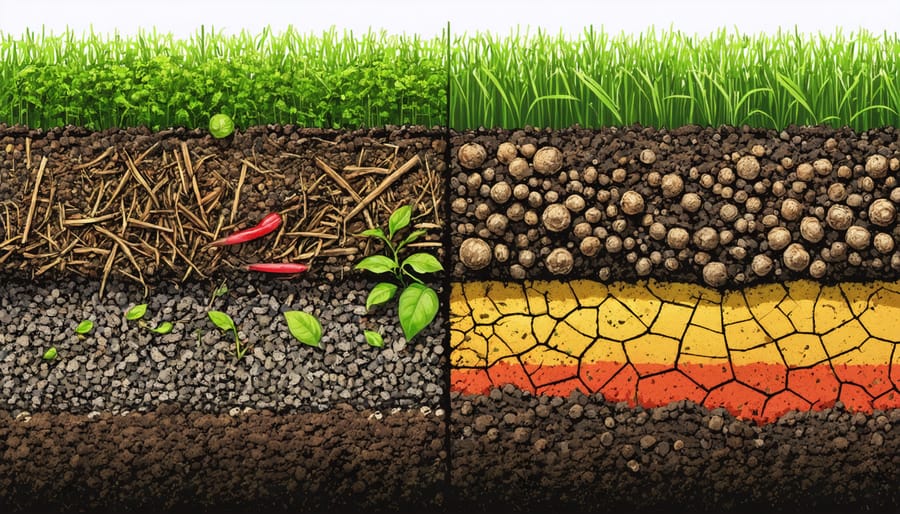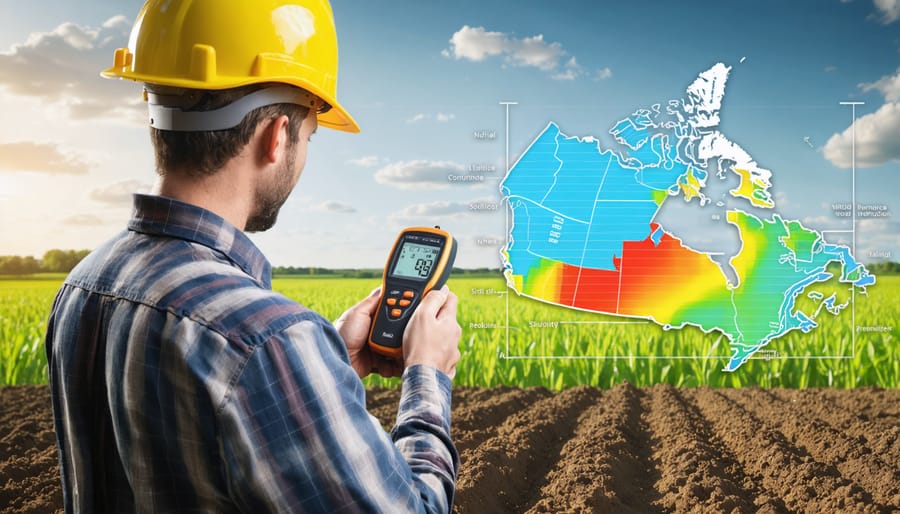The intricate dance between groundwater and surface water shapes every aspect of Alberta’s agricultural landscape. Understanding this relationship transforms how we approach groundwater irrigation systems and water management strategies. When precipitation seeps into soil, it initiates a complex exchange between aquifers and surface water bodies that directly impacts crop yields, soil health, and long-term farm sustainability.
For Alberta farmers, this interaction determines crucial decisions – from irrigation timing to well placement. Recent studies from the Prairie provinces show that properly managed groundwater-surface water interactions can increase water use efficiency by up to 30% while reducing pumping costs. Understanding these dynamics helps farmers anticipate seasonal water availability, plan irrigation schedules, and protect vital water resources for future generations.
As climate patterns shift and water demands grow, mastering the relationship between surface and groundwater becomes increasingly critical for Canadian agriculture. This knowledge empowers farmers to make informed decisions about water management, ensuring both environmental stewardship and agricultural productivity.
The Hidden Dance of Water Below Your Fields
Alberta’s Unique Groundwater Patterns
Alberta’s groundwater patterns are uniquely shaped by the region’s diverse geological formations and seasonal climate variations. The province’s agricultural belt features distinct layers of permeable and impermeable materials, creating complex networks of aquifers that interact differently with surface water across various zones.
In southern Alberta’s irrigated regions, groundwater typically flows from the foothills toward the east, with recharge rates varying significantly between seasons. During spring snowmelt, these aquifers receive substantial recharge, while summer months often see increased withdrawal for agricultural use.
The province’s characteristic glacial till deposits create unique pathways for water movement, with some areas showing rapid surface water-groundwater exchange, while others maintain more isolated groundwater systems. Many Alberta farmers have observed that their wells respond differently to precipitation events compared to other Canadian regions, reflecting these distinct geological characteristics.
Local studies have shown that areas near major river systems, such as the Bow and Red Deer Rivers, demonstrate particularly strong groundwater-surface water connectivity. This knowledge helps farmers make informed decisions about irrigation timing and well placement, especially during peak growing seasons.
Your Soil’s Natural Water Highway
Think of your soil as a complex network of natural highways, where water moves both vertically and horizontally through different layers. Just like traffic on a real highway, water follows specific pathways determined by your soil’s structure and composition. Through a process called infiltration, surface water seeps downward through soil pores, eventually reaching the water table. This movement isn’t just one-way – groundwater can also rise to the surface through capillary action, contributing to effective soil moisture management.
In Alberta’s varied landscape, this interaction becomes particularly important during our spring thaw and summer dry spells. Sandy soils typically allow faster water movement, while clay-rich soils slow it down. Understanding these natural pathways helps you work with, rather than against, your land’s natural water movement patterns. When you see moisture at the soil surface on a dry day, that’s often groundwater making its way up through these pathways, supporting your crops even when rainfall is scarce.
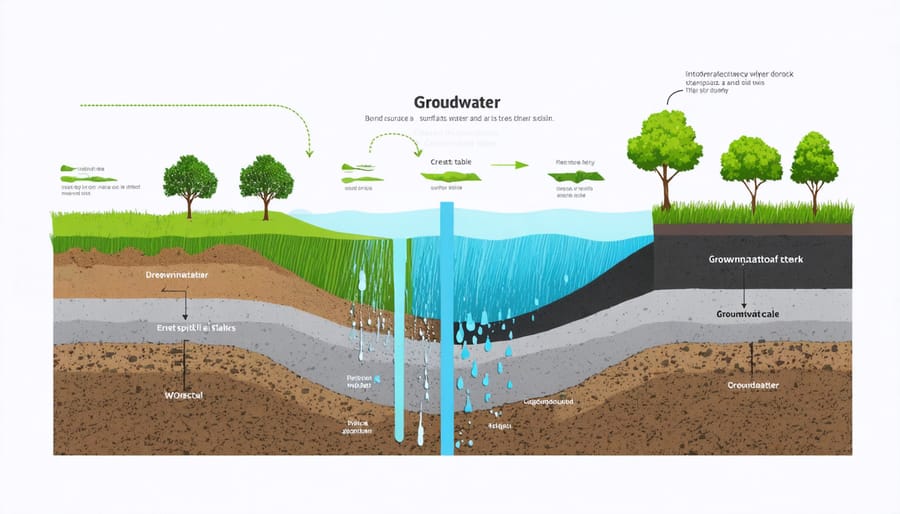
Maximizing Your Subsurface Irrigation Efficiency

Reading Your Field’s Water Signals
Understanding how groundwater interacts with surface water starts with careful observation and monitoring. As Alberta farmers, we’re fortunate to have access to advanced smart water monitoring systems that help us track these interactions effectively.
Start by installing piezometers at key points in your field to measure groundwater levels. These simple but effective tools provide crucial data about water table fluctuations. Place them strategically near water bodies and in areas where you suspect strong groundwater-surface water connections.
Visual indicators can also tell you a lot. Look for areas where vegetation remains green during dry spells – these might indicate groundwater discharge zones. Similarly, watch for spots where surface water consistently disappears quickly after rain, as these could be recharge areas.
Soil moisture sensors placed at different depths help track water movement patterns. Modern sensors can send real-time data to your phone, allowing you to respond quickly to changing conditions. Many Alberta farmers have found success using a combination of shallow and deep sensors to understand the complete water profile.
Consider seasonal patterns too. Spring snowmelt and summer irrigation periods often show different interaction patterns. Keep a simple log of observations, including rainfall amounts, irrigation schedules, and crop response. This information, combined with sensor data, helps build a comprehensive picture of your field’s water dynamics.
Remember to check your local watershed authority for historical groundwater data – this can provide valuable context for your observations and help you make more informed water management decisions.
Timing Your Irrigation Right
The key to maximizing your irrigation efficiency lies in understanding the natural rhythm between groundwater and surface water systems. Here in Alberta, successful farmers have found that timing their irrigation to complement these natural patterns can lead to significant water savings and better crop yields.
Morning irrigation, particularly between 4 AM and 10 AM, typically provides the best results as evaporation rates are lower and groundwater levels are often at their highest. This timing allows for optimal absorption and reduces water loss to evaporation. During these hours, the natural groundwater pressure helps push water through the soil profile more effectively.
Local farmer Mike Thompson from Lethbridge shares, “Since adjusting our irrigation schedule to early mornings, we’ve noticed a 20% reduction in water usage while maintaining crop quality. The soil moisture sensors show better water retention when we work with natural groundwater patterns.”
Consider these practical timing strategies:
– Monitor soil moisture levels regularly to establish baseline patterns
– Adjust irrigation schedules based on seasonal groundwater fluctuations
– Account for crop growth stages and root depth
– Factor in weather forecasts and recent precipitation
During periods of high groundwater levels, typically in spring and after significant rainfall, you may need to reduce irrigation frequency. Conversely, when groundwater levels are lower in late summer, you might need to increase irrigation duration rather than frequency to ensure deep soil penetration.
Remember to check your local watershed authority’s guidelines, as different regions in Alberta may have specific timing restrictions based on local groundwater conditions. Many agricultural extension offices provide free tools to help you track optimal irrigation timing for your specific location.
Real Success Stories from Alberta Farms
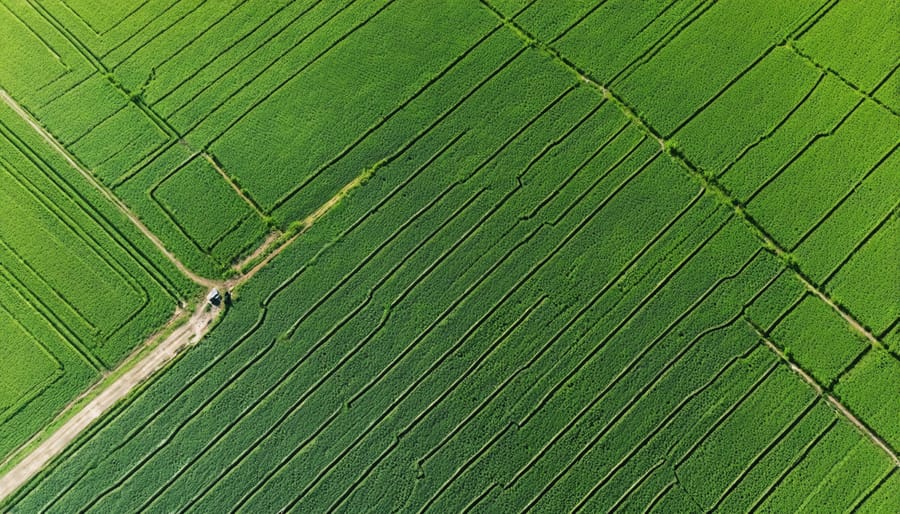
The Turner Family’s Water-Smart Revolution
The Turner family farm, located just outside of Lethbridge, Alberta, has become a shining example of successful groundwater management in dry prairie conditions. In 2018, Tom and Sarah Turner transformed their 640-hectare operation by implementing an innovative water monitoring system that tracks both groundwater levels and surface water interactions.
“We used to struggle with irrigation timing,” says Tom Turner. “Some fields showed signs of water stress while others had drainage issues. Understanding how our groundwater interacts with surface water changed everything.”
The Turners installed a network of monitoring wells equipped with pressure sensors that provide real-time data about water table fluctuations. They also mapped the natural springs and seasonal wetlands on their property, integrating this information into their irrigation planning.
The results have been remarkable. Within two years, the family reduced their water consumption by 30% while maintaining crop yields. They’ve documented improved soil health and noticed that their natural wetlands are thriving year-round.
“What makes this system work is how we adjust our irrigation scheduling based on groundwater conditions,” Sarah explains. “During periods when groundwater levels are higher, we can reduce irrigation, letting nature do some of the work.”
The Turners now share their experiences with neighbouring farms, hosting field days where they demonstrate their monitoring systems and discuss the benefits of understanding groundwater-surface water relationships. Their success has inspired fifteen other local farms to adopt similar practices.
Sustainable Solutions at Ridge Valley Farms
Ridge Valley Farms in Red Deer County has become a model for sustainable water management in Alberta through their innovative approach to groundwater-surface water integration. Owner Sarah Thompson implemented a comprehensive monitoring system across her 800-hectare operation in 2019, working closely with local hydrogeologists to understand the natural flow patterns beneath her fields.
The farm installed a network of monitoring wells equipped with water level sensors, helping Thompson track groundwater fluctuations throughout the growing season. This data is used to optimize irrigation scheduling and reduce water waste. “Understanding how our groundwater connects with the nearby creek system has completely changed how we manage irrigation,” Thompson explains.
Key elements of Ridge Valley’s success include buffer zones along waterways, controlled drainage systems, and precision irrigation technology. The farm maintains 30-metre vegetated strips along creek banks, which filter runoff and promote natural groundwater recharge. Their sub-surface drainage system includes control structures that can hold water back during dry periods, effectively banking it for future use.
The results speak for themselves: Ridge Valley has reduced their water consumption by 25% while maintaining crop yields. They’ve also noticed improved stream health in adjacent waterways, with more consistent flow during dry periods. The farm regularly hosts field days for other producers, sharing their experiences and encouraging adoption of similar practices throughout the region.
Protecting Your Water Resources for the Future
Building Long-term Water Resilience
Building water resilience in Alberta requires a thoughtful, long-term approach that considers both surface and groundwater resources. Many successful farmers in our region have adopted integrated water management strategies that work with natural systems rather than against them.
Take the example of the Miller family farm near Lethbridge, where they’ve implemented a comprehensive monitoring system to track groundwater levels and surface water quality throughout their property. By understanding these interactions, they’ve optimized their irrigation schedule and reduced water usage by 30% over five years.
Key strategies for building water resilience include:
Creating buffer zones along waterways to slow runoff and enhance groundwater recharge
Installing soil moisture sensors at various depths to track water movement
Developing drought-response plans that consider both immediate and long-term needs
Participating in watershed stewardship groups to coordinate regional water management
The Alberta Water Portal Society recommends farmers maintain detailed records of water levels and usage patterns across seasons. This data helps identify trends and adjust practices accordingly. Consider working with local conservation authorities to assess your property’s unique water dynamics and develop tailored solutions.
Remember, building resilience isn’t just about individual actions – it’s about community collaboration. Many successful water management initiatives in Alberta have emerged from farmers sharing knowledge and resources with their neighbours, creating stronger, more sustainable agricultural communities.
Working with Nature, Not Against It
In Alberta’s agricultural landscape, success comes from working in harmony with natural water cycles rather than trying to control them. Our farmlands already provide excellent natural groundwater filtration, and by enhancing these natural processes, we can create more sustainable water management systems.
Many Alberta farmers have found success by implementing buffer zones along waterways and maintaining natural wetlands on their properties. These areas act as natural sponges, helping regulate water flow between surface and groundwater systems while filtering out pollutants. For example, the Miller family farm near Red Deer has preserved 10 hectares of wetlands, resulting in more stable groundwater levels throughout the growing season.
Conservation tillage practices and cover cropping also play crucial roles in supporting healthy water interaction. These methods improve soil structure, increasing water infiltration rates and reducing runoff. The enhanced organic matter content creates a more robust soil ecosystem that naturally regulates water movement between surface and subsurface layers.
By working with these natural processes, farmers report reduced irrigation needs, better drought resilience, and improved crop yields. Plus, these approaches often require less energy and maintenance than conventional irrigation systems, leading to cost savings while protecting our water resources for future generations.
As we’ve explored throughout this article, understanding groundwater-surface water interaction is crucial for sustainable farming in Alberta. The key takeaway is that these interactions directly impact your farm’s water availability, soil health, and crop yields. By monitoring groundwater levels and maintaining detailed records of seasonal changes, you can make informed decisions about irrigation timing and volume.
Consider implementing the following practical steps on your farm: First, establish observation wells to track groundwater levels throughout the growing season. Second, work with local conservation authorities to develop a water management plan that accounts for both surface and groundwater resources. Third, explore opportunities to participate in watershed stewardship programs, which can provide additional resources and support.
Remember that your actions affect neighbouring farms and the broader community. By adopting sustainable practices like controlled drainage systems and maintaining riparian buffer zones, you’re contributing to the long-term health of Alberta’s water resources.
Take advantage of available resources through Alberta Agriculture and Forestry, and connect with local agricultural extension offices for personalized guidance. Consider joining farmer-led watershed groups to share experiences and learn from others in your community.
Together, we can ensure the sustainability of our water resources while maintaining productive and profitable farming operations for generations to come.

